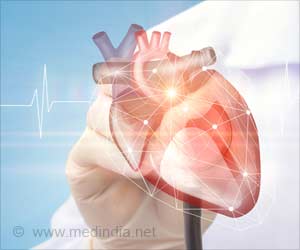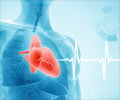- World Heart Rhythm Week aims to educate and raise awareness among the general population about arrhythmias or rhythm disturbances of the heart
- World Rhythm Week 2018 urges people not to take fainting episodes lightly as it may indicate underlying arrhythmia
- Arrhythmia is associated with many complications such as stroke and sudden death, if not diagnosed and treated.
History of World Arrhythmia Week
The first Heart Rhythm Week pioneered by the Arrhythmia Alliance UK was celebrated in 2004. The organization has been actively striving through its campaigns to promote early diagnosis and treatment as well as improve quality of life of persons affected by arrhythmias. Since 2004, this event is synonymous with several activities undertaken by the Alliance and its partners across the globe. Whether it is an arrhythmia information bus in India or pulse checks in Perth, Australia, Heart Rhythm Week urges everyone to come together with the common mission of increasing awareness about arrhythmias.Aims of the World Rhythm Week
Although arrhythmias are fairly common, general awareness remains painfully low. Each year the Arrhythmia Alliance chooses a unique theme to mark the event and uses it in its campaign to effectively create awareness and spread the message about arrhythmias widely. The annual event hopes to achieve the following- Early diagnosis and treatment of arrhythmias in undiagnosed persons by increasing awareness of symptoms and signs such as fainting
- Prevention of complications such as stroke due to arrhythmias
- Providing funds to assist poor arrhythmia patients and promote research
- Placement of automatic external defibrillators (AEDs) that can be used by trained non-medical personnel such as police, flight attendants, security guards, and lay public to respond to emergency situations to save the life of patients in public places such as offices, airports, schools, gym and shopping centers.
What We Can Do to Create Arrhythmia Awareness
- As members of public or health professionals we can contribute our bit in making the World Rhythm Week a success and make a difference. Some of the ways we can help are
- Donating to the organization to help fund their campaigns as well as philanthropic activities and for arrhythmia research
- Download campaign materials such as posters, messages from the website (http://www.heartrhythmalliance.org/aa/uk/get-involved) and post and share these widely on social media such as Facebook and Twitter
- Share inspiring stories of persons who have overcome their disability to carve success stories for themselves
- Organize fundraising events in the community such as walks, sporting events or sale of themed cups or bracelets and donating the proceeds to charity
- Distribute leaflets about arrhythmias to public at prominent locations such as markets, parks or bus and train stations to create and spread awareness
- Air educational programs and talks by popular doctors on mass media such as radio and television about recognition of symptoms and importance of early diagnosis
- Feature write-ups about arrhythmias in print media such as newspapers and popular magazines
- Get prominent sports or film personalities to speak about arrhythmias on visual media for greater impact and reach among the public
- Doctors and clinics can offer free heart check-ups during this week
- Local administration should be urged to get involved in creating awareness and enable access to affordable healthcare for all
Other Successful Campaigns Organized by Arrhythmia Alliance
A few ongoing campaigns being sponsored by the Arrhythmia Alliance include- Defibs Saves Lives – installation of AEDs in prominent locations for use in emergency situations
- Know Your Pulse – Training every person to feel their pulse and recognize any abnormality
- Whole Hearted – Improving treatment facilities and quality of life of arrhythmia patients
- Don’t Fail on Heart Failure – Improving care of heart failure patients
- Celebrating a Year Without Stroke – Educating arrhythmia patients about stroke risk and its prevention
- Anticoagulation Self-Monitoring Alliance (ACSMA) – Educating patients on anticoagulants such as warfarin
- Take Fainting to Heart (2018) – Raising awareness about not to ignore fainting episodes
Overview of Arrhythmias
Arrhythmias represent rhythm disturbances due to disorders of the conducting system of heart which causes the heart to beat and pulse to be generated. They may be harmless but can occasionally be life threatening.In arrhythmias, the SA node which is the main pacemaker of the heart fails and other parts of the conduction system begin to generate their own disorderly and ineffective impulses leading to various symptoms such as
- Tiredness
- Fainting attacks
- Dizziness
- Palpitations
- iMissed or skipped beats
References:
- Whole Hearted (http://www.heartrhythmalliance.org/aa/uk/whole-hearted)
- What is Heart Rhythm Week? (http://www.heartrhythmalliance.org/aa/uk/history-of-heart-rhythm-we)
Source-Medindia















